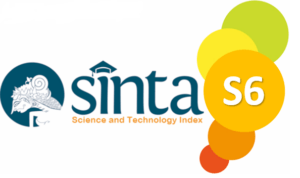SOCIAL DIALECT UTTERED BY INDIA COMMUNITY IN PADANG
DOI:
https://doi.org/10.31933/ejpp.v1i1.96Keywords:
code, mixing, change, ethnic, intial, medial, final, deletion, subtitution, expansion, permutation, parapharseAbstract
The language spoken by the masses of Indian descent in Padang is one of the social dialects that occurs in the city of Padang other than the Minangkabau dialect spoken by Chinese descendants, and the descendants of Nias. The ethnic customs of India in speaking and communicating have been accustomed to mixing their mother tongue with Minangkabau language, so that there has been a mixture of vocabulary that they say. Because the mixes are so swift, there has been mixed code-mixing in their language.
The approach in researching this problem is used in sociological approach to achieve the objectives of this research. The purpose of this study is to explain the language changes that occur among ethnic Indians in the city of Padang. The theory is implemented in researching the phenomenon of language changes that occur and studied by using linguistic theories. After obtaining the data, the authors make a formula of mixing code (code mixing) which is found in the speech of ethnic Indian in the city of Padang. This study uses field research methods to obtain significant data and literature study to obtain theories that will be used as the basic theory in this thesis. Techniques of collecting data, among others, by using qualitative methods, which in this case the authors obtain data through 7 people informants in accordance with the criteria NORM (Nonmobile Older Rural Males). From seven people as the informan, the writer can apply recording techniques to obtain significant data.
The results of the research conducted, the writer finds language changes that are influenced by Minangkabau language, Chinese Padang language and Indonesian language. The changing that occur among others, change vowel /i/ become /e/ in the middle of the word, disappearance of consonant /h/ in the beginning, middle, and end of word. Consonant removal /r/ in the middle and end of word. The impingement /to/ at the end of the word, vowel /u/ being /o/ in the middle and end of the word, consonant splitting /t/ to /k/, vowel /a/ being /o/ the consonant splitting /p/ into /?/, the /?/ being /a/ at the end of the word, vowel /e/ being /a/ in the middle and beginning of the word. The disappearance of vowel /e/ in the middle of the word, the disappearance of consonant /d/ in the beginning and middle of the word, as well as the disappearance of consonant /p/ at the end of the word. The Indians ethnic code mixing can be formulated by using the theory of code mixing.
References
---------------------------.2009. Bahasa Tiong Pa Bahasa Minangkabau Juga. Padang: Lembaga Kajian Aset Budaya Indonesia Tonggak Tuo.
---------------------------.2009. Interferensi Bahasa Minangkabau dalam Pembentukan Bahasa Tiong Pa. Padang: Lembaga Kajian Aset Budaya Indonesia Tonggak Tuo.
--------------------------.2009. Pengaruh Komunikasi antarkultur dalam Pembentukan Kata Sapa Bahasa Tiong Pa. Padang: Lembaga Kajian Aset Budaya Indonesia Tonggak Tuo. 2009.
-------------------------.2013. O We Orang Padang O. Kehidupan Masyarakat Tiong Pa. Padang: Lembaga Kajian Aset Budaya Indonesia Tonggak Tuo
Aitchison, Jean. 2001. Language Change Progress or Decay. Cambridgeshire: Cambridge University Press.
Brinton, J Laurel et al. 2005. Lexicalization and Language Change Research Surveys in Linguistic. Cambridge: Cambridge University Press.
Chamber, J.K et al. 2013. The Handbook of Language Variation And Change. New York City: A John Wiley & Sons, Ltd., Publication.
Good, Jeff. 2008. Linguistic Universal and Language Change. Oxford: Oxford University Press.
Hickey, Raymond. 2003. Motive For Language Change. Cambridge: Cambridge University Press.
Holm, A. John. 2004. An Introduction to Pidgins and Creoles. Cambridge: Cambridge University Press.
Holmes, Janet. 2012. An Introduction into a Sociolinguistic. London: Routledge.
Leech, Geoffrey et al. 2009. Change in Contemporary English. Cambridge: Cambridge University Press.
Muysken, Peter. 2000. Bilingual Speech. Cambridge: Cambridge University Press.
Trask, R.L. 2010. Why Do Languages Change. Cambridge: Cambridge University Press.
Downloads
Published
How to Cite
Issue
Section
License
Penulis yang mempublikasikan manuskripnya di jurnal ini menyetujui ketentuan berikut:
- Hak cipta pada setiap artikel adalah milik penulis.
- Penulis mengakui bahwa Ekasakti Jurnal Penelitian & Pegabdian (EJPP) berhak menjadi yang pertama menerbitkan dengan lisensi Creative Commons Attribution 4.0 International (Attribution 4.0 International (CC BY 4.0) .
- Penulis dapat mengirimkan artikel secara terpisah, mengatur distribusi non-eksklusif manuskrip yang telah diterbitkan dalam jurnal ini ke versi lain (misalnya, dikirim ke repositori institusi penulis, publikasi ke dalam buku, dll.), dengan mengakui bahwa manuskrip telah diterbitkan pertama kali di Ekasakti Jurnal Penelitian & Pegabdian (EJPP).


.png)














